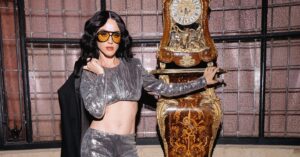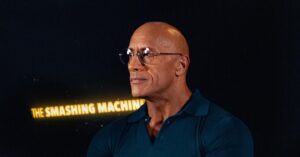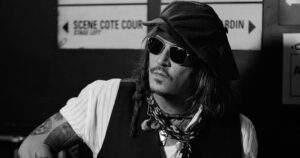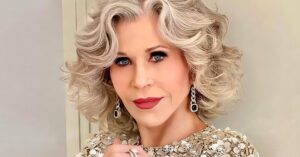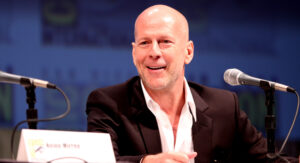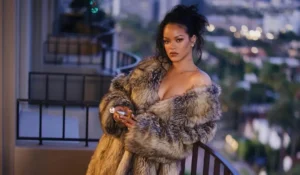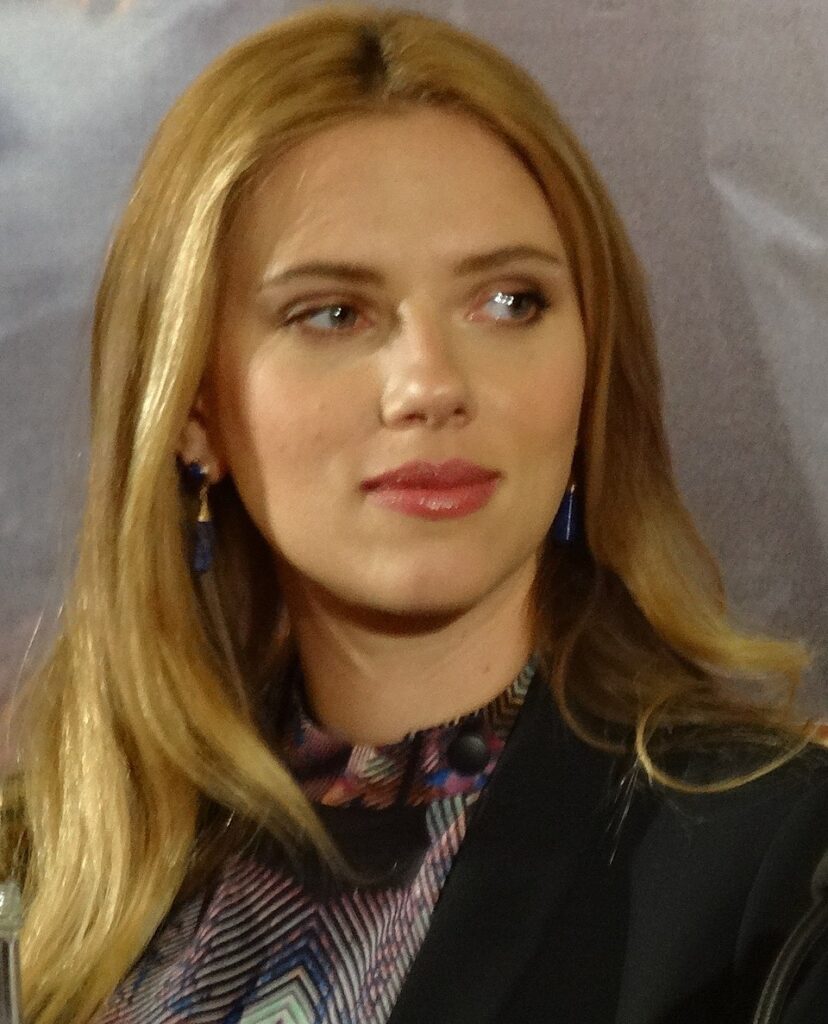
A star who keeps evolving
Scarlett Johansson is one of the rare Hollywood figures who began as a gifted child actor and transformed into a global icon without losing artistic credibility.
She balances blockbuster stardom with risk-taking independent films.
She commands the red carpet yet keeps her private life guarded.
She can sell out theaters with action spectacles while winning acclaim for vulnerable, intimate performances.
That kind of duality is not an accident.
It is the result of meticulous career choices, a keen sense of timing, and a restless curiosity about what storytelling can do.
In this comprehensive profile, we explore the trajectory, craft, business savvy, cultural impact, and future horizons of Scarlett Johansson.
We will look at the movies that defined her, the risks that reshaped her, and the evolving conversation about celebrity, representation, and creative control.
Whether you know her best as Black Widow or as the wistful voice in Her, there is more to Johansson than one role or genre.
She remains a moving target, and that is precisely why audiences and critics keep paying attention.
Early life and breakthrough beginnings
Scarlett Johansson was born in New York City, and the city never really left her.
Its stubborn energy and rough-spark elegance show up in her poise, her humor, and her innate rapport with directors who favor realism.
Her early education in performing arts gave her a foundation in discipline and craft, but it was her hunger to work that drove the straight line from auditions to sets.
Her first major attention came with The Horse Whisperer, where a young Johansson conveyed grief and resilience with startling depth.
Casting agents and filmmakers noticed a presence that read as both grounded and luminous.
Soon after, she became a regular on the indie circuit, joining the wave of early 2000s American cinema that prized mood, subtext, and character-driven storytelling.
Films like Ghost World signaled that she could hold the screen with subtlety rather than spectacle.
Each early part built a reputation for a performer who could say a lot with a little.
If you are curious about that era of American film, check out the catalog on platforms like Criterion Channel to see the kind of influences that shaped her sensibility.
It is a helpful lens to understand where Johansson started and why certain directors gravitated toward her.
Lost in Translation and the art of stillness
Sofia Coppola’s Lost in Translation was a seismic moment.
Johansson, still in her late teens, delivered a performance filled with micro-gestures and interiority that resonated worldwide.
Unlike roles that rely on big speeches, this part thrived on silence and gaze.
The camera stayed with her because the audience wanted to know what she was thinking.
She became a symbol of an entire mood: the melancholy of connection and the poetry of being slightly out of step with the world.
That performance changed expectations.
It proved she could carry a film emotionally without the usual thriller beats or comedy setups.
It also positioned her as a favorite for auteurs who treasure atmosphere, tone, and the power of stillness.
After that, her choices leaned into directors who knew how to make quiet feel electric.
For context on Coppola’s filmmaking style and its emphasis on mood, you can explore interviews and essays on BFI, which often analyze the craft behind films like Lost in Translation.
Working with great directors
Johansson’s filmography reads like a tour of distinctive directorial voices.
She worked with the Coen Brothers, Christopher Nolan, Spike Jonze, Taika Waititi, Jonathan Glazer, Wes Anderson, and more.
Each collaboration carried lessons in rhythm, tone, and risk.
With Nolan, she learned to navigate layered storytelling that treats the audience as a partner in the puzzle.
With Jonze, she proved that a voice can be as expressive as a face, embodying a fully realized character without ever appearing on screen.
With Glazer’s Under the Skin, she stripped away the comfort of celebrity and dove into an eerie, almost documentary style of performance.
Few actors would gamble their brand on a film that invites alienation in every sense of the word.
Johansson embraced it, and the gamble paid off artistically.
If you enjoy following director-led filmographies, browsing director retrospectives on Letterboxd can be a gateway into understanding how actors like Johansson evolve by choosing collaborators as carefully as scripts.
The Marvel era and the Black Widow phenomenon
It is impossible to discuss Scarlett Johansson without addressing the Marvel era.
As Natasha Romanoff, she became a pillar of the Marvel Cinematic Universe.
The character grew from enigmatic assassin to complex teammate to tragic linchpin of a universe-spanning saga.
Johansson infused Black Widow with dry wit, moral gravity, and a physical presence that felt both balletic and brutal.
She performed intense training to make the action feel credible and grounded, which audiences noticed.
There is also a business dimension to this chapter.
Consistent appearances across a decade of interconnected films created a long arc of audience investment.
That kind of franchise exposure expands cultural footprint but risks typecasting.
Johansson navigated that tension by interleaving challenging projects between Marvel entries, keeping critics engaged while serving a global audience.
That pattern is a masterclass in portfolio strategy for modern stars.
To revisit the character’s evolution, explore the Marvel timeline features on Marvel’s official site for a structured look at Natasha Romanoff’s journey.
Beyond the mask: range and reinvention
Johansson’s range became most evident in the post-Avengers years.
Marriage Story showcased ferocious vulnerability and precise, stage-like control.
Jojo Rabbit balanced satire with aching humanity.
Her comic timing sharpened, and her dramatic instincts deepened.
These films reminded audiences that a box-office titan can also deliver nuanced, awards-caliber work when the material is right.
She also explored voice performance, which is a specialized craft.
In animation and voice-driven films, an actor must transmit micro-emotions through breath, cadence, and musicality.
Johansson’s warm, slightly husky timbre became a signature asset, recognizable and comforting.
It allowed her to connect with audiences across genres and ages, from indie introspections to family-friendly adventures.
Check voice-acting breakdowns on Animation World Network to appreciate the technical discipline behind performances that audiences often underestimate.
Craft notes: how she acts
Johansson’s acting often emphasizes the following traits.
She favors reactive listening.
She lets the other person’s line land before shaping her response.
Her timing feels conversational, not theatrical, and she leaves room for breath.
She uses stillness as a strategy, trusting the camera to find tension in minimal movement.
She calibrates eye work with precision, shifting focus points to convey changing mental states.
She also tends to underplay when the script inflates, which avoids melodrama.
In high-stakes scenes, she grounds emotion in physical truth: a throat swallow, a shaky exhale, a sudden glance away.
On set reports often describe her as prepared and collaborative, someone who tracks continuity across takes to preserve emotional arcs.
That diligence is part of why editors and directors praise her footage.
It cuts cleanly because the performance has internal logic.
For aspiring actors, it is helpful to study her scenes with the sound off to observe body language, then listen only to the audio to study vocal dynamics.
This two-pass approach reveals how she layers choices.
Image, privacy, and the modern celebrity lens
Johansson’s celebrity story is also about boundaries.
She attends premieres, campaigns for films, and participates in press circuits, yet keeps her private life largely outside the spectacle.
That balance has grown more difficult in the social media age, where every outing can become content.
Her approach signals a preference for career-forward narratives rather than constant personal disclosures.
This restraint has strengthened her brand.
It allows each new role to arrive without excessive tabloid baggage.
It also underscores a belief that the work comes first and the myth comes second.
In an era where parasocial intimacy is often treated as currency, Johansson’s calculated distance feels almost radical.
If you track media culture and privacy trends, research from organizations like Pew Research Center offers useful context on shifting attitudes toward public figures.
Producing, negotiating, and creative leverage
As Johansson’s stature rose, so did her influence behind the camera.
She has aimed to expand roles not only for herself but for other storytellers, pushing for better conditions and better narratives.
Negotiation has been a visible part of her recent chapters, highlighting issues around streaming releases, backend compensation, and fairness in the new distribution landscape.
These negotiations are not just celebrity headlines.
They portend how the entire industry structures deals in the hybrid theatrical-streaming era.
By advocating for contractual clarity and performance-based compensation, Johansson has helped normalize assertiveness for above-the-line talent.
That matters for equity across the board.
It also shows that star power is no longer just about opening weekend.
It is about ownership, long-tail value, and the right to shape how work meets the audience.
To follow the business side of entertainment, resources like Variety and The Hollywood Reporter cover the evolving economics with regular analysis.
Representation, casting debates, and growth
Johansson has faced criticism and controversy around casting choices and representation.
These moments sparked public debate about who should play whom and how Hollywood should approach identity-sensitive roles.
Engaging with these debates openly, she reflected on the responsibilities that come with platform and power.
The outcome has been a visible shift toward more mindful role selection and public framing.
Artists evolve, and accountability can guide that evolution.
The broader conversation is not confined to one star.
It is an industry-wide recalibration that touches casting directors, producers, and audiences.
Johansson’s experience sits within that context, illustrating how fame amplifies both choices and course corrections.
As the market globalizes and audiences demand nuance, stars who listen and adapt tend to thrive.
For deeper thinking on representation in media, essays and guidelines from groups like USC Annenberg’s Inclusion Initiative provide data-driven insights.
Fashion, voice, and the power of recognizable presence
A significant part of Johansson’s appeal is sensorial.
Her voice is unmistakable, her silhouette cinematic, her fashion sense confident without feeling overworked.
From Old Hollywood looks to minimal modern aesthetics, she adapts while maintaining clear identity.
Photographers love how she catches light, which speaks to both craft and charisma.
That visual continuity becomes part of her brand equity, recognizable in posters, trailers, and editorial spreads.
In a media environment saturated with novelty, consistency is surprisingly rare.
Johansson’s presence offers that.
It tells audiences what kind of experience they might get while still leaving room for surprise.
This is the paradox of star image: be familiar enough to be trusted, but unexpected enough to be exciting.
If you enjoy fashion-history angles, the digital archives at Vogue can be a window into how celebrity style evolves with cultural trends.
Awards, recognition, and critical respect
Awards are not the only metric, but they are a narrative force in cinema.
Johansson’s nominations across major ceremonies validated what critics had long argued: she is not merely famous; she is formidable.
What stands out is the diversity of the roles that earned recognition.
From devastating divorce drama to satirical wartime narrative, the range is the story.
It signals to studios that investing in her for non-franchise projects is both artistically and commercially sound.
Critics often cite her control over tone as a competitive advantage.
She can shift from irony to sincerity in a single breath, which lets directors modulate genre without losing coherence.
That elasticity is one reason she fits so many cinematic ecosystems.
It is also why her work ages well, inviting rewatch and reassessment.
To track festival runs and awards histories, you can browse databases like IMDb for timelines and cross-references.
Cultural footprint and audience connection
What does Scarlett Johansson mean to audiences today.
For some, she is the beating heart of a superhero team.
For others, she is the aching whisper at 2 a.m., asking unanswerable questions about love and identity.
For many, she is proof that a woman can command franchises, carry art films, negotiate hard, and keep a sense of humor.
That multidimensional appeal creates a durable cultural footprint that resists the usual boom-and-bust cycles of fame.
Her roles often explore loneliness, connection, and reinvention.
These are evergreen themes that cross borders and demographics.
In a fractured media market, unifiers are rare.
Johansson’s body of work functions as one of those unifiers, cutting across fan bases and taste tribes.
The endurance of that connection suggests she will remain relevant as genres and platforms shift.
For commentary and community reactions, the conversation hubs on Reddit’s r/movies often capture the pulse of audience sentiment.
Business ventures, endorsements, and branding strategy
Beyond film sets, Johansson’s public persona extends into endorsements and selective brand partnerships.
These ventures must align with an image that balances sophistication with approachability.
The right partnership amplifies both sides.
In a crowded celebrity economy, authenticity is the currency that converts.
Johansson has been careful to avoid oversaturation, which keeps each campaign feeling eventful rather than routine.
There is a strategic lesson here for creatives of all kinds.
Say yes to work that expands your story, not just your schedule.
Scarcity can be a branding strategy, not just a constraint.
When the audience trusts that your name signals quality, you can afford to be picky, and being picky builds the brand further.
For marketing professionals studying the celebrity-brand equation, case studies on WARC can be instructive.
The enduring allure of mystery
Modern celebrity often rewards overexposure, yet Johansson keeps a measure of mystery.
That mystery acts like negative space in design.
It frames the parts we can see and makes them pop.
It also keeps the focus on the work, which is where she seems most at home.
Mystery is not aloofness; it is curation.
It is the choice to let roles speak louder than a thousand posts.
Audiences respond because cinema itself is an art of suggestion.
We do not want every answer spelled out.
We want stories that invite us in.
Johansson, intentionally or not, mirrors that dynamic in her public life.
It is a strategy that protects longevity in a fickle marketplace.
If you like thinking about image-making, media theorists discussed on Stanford Encyclopedia of Philosophy offer frameworks that connect aesthetics, perception, and celebrity.
The future: roles worth waiting for
What comes next for Scarlett Johansson is not just a calendar of releases.
It is a set of choices that will test what the industry becomes after seismic shifts in streaming, labor, and global markets.
Expect more producing, more careful negotiation, and more roles that balance prestige with scale.
Expect experiments with formats, from limited series to auteur-driven features that travel the festival circuit.
Expect the unexpected, because she has made a habit of surprising even the closest watchers.
As distribution evolves, the challenge will be to craft events that feel cinematic, whether viewed in IMAX or at home.
Johansson has the leverage to build those events and the instincts to make them matter.
If the past is any guide, she will continue walking that line between commerce and craft, finding the sweet spot where the two amplify each other.
That is where stars become institutions, and institutions become legacies.
For release calendars and industry shifts, keep an eye on the analysis sections of IndieWire and Deadline, which track trends that shape creative choices.
Quick filmography highlights for discovery
- Lost in Translation — restrained, luminous, emotionally resonant.
- Under the Skin — bold, unsettling, transformative.
- Her — intimate, voice-driven, quietly devastating.
- Marriage Story — raw, precise, theatrically charged.
- Jojo Rabbit — satirical, tender, morally complex.
- The Prestige — cunning, layered, psychologically rich.
- Black Widow and MCU entries — kinetic, witty, character-deepening.
If you are building a watchlist, try pairing films across extremes: one intimate drama with one large-scale spectacle.
This contrast highlights her control over tone and tempo.
You can organize lists on JustWatch to find where titles are streaming in your region.
Links to explore more
- Official Marvel character hub for Natasha Romanoff on Marvel.com.
- Critical essays and film education resources at BFI.
- Director-centric journals and interviews on IndieWire.
- Audience reviews and diaries on Letterboxd.
- Industry business analysis on Variety and The Hollywood Reporter.

Also Read:Johnny Depp



